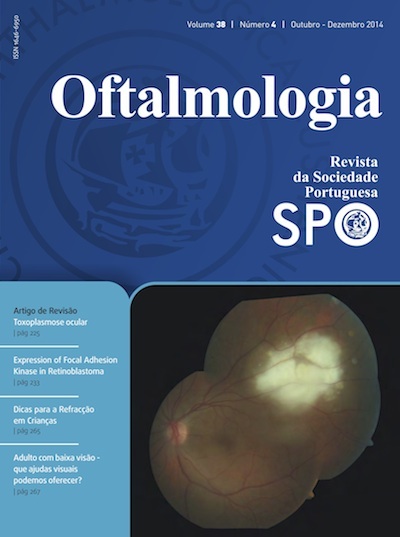Corneal Structure and Biomechanics in Collagen Vascular Diseases
DOI:
https://doi.org/10.48560/rspo.6851Palavras-chave:
Corneal Hysteresis, Corneal Resistance Factor, Collagen Vascular Diseases, Ocular Response Analyzer. Resumo
Purpose: The purpose of this study was to evaluate corneal biomechanics and structure in asymptomatic individuals with Collagen Vascular Diseases (CVD), and compare with an age- -matched control group.
Methods: In this prospective study 23 patients with the diagnosis of CVD (46 eyes) and 17 healthy age and gender-matched controls (34 eyes) underwent Ocular Response Analyzer and Specular Microscopy measurements. CH and CRF were recorded for each eye using the ORA, pachymetry and endothelial cell count were measured through Specular Microscopy.
Results: Mean CH was 10.1 +/- 1.3 mmHg in the study group and 10.0 +/- 1.2 mmHg in the control group. Mean CRF was 10.2 +/- 1.5 and 9.9 +/- 2.5 mmHg in the study and control groups respectively. These differences weren’t statistically significant (p=0,75 and p=0,47 respective- ly). CH was significantly higher in patients treated with hydroxychloroquine (10.4) compared with those who had no treatment (9.4) (p=0.006). Likewise the average CH was significantly lower in patients with five or more years of disease 9.6 vs 10.7 mmHg (p=0.01).
Conclusions: Our results suggest no difference in the biomechanical properties of the cornea of individuals with CVD and a normal control population. However, there seems to be an inverse association between time since diagnosis and the value of CH. Additionally, there seems to be a relationship between the value of CH and treatment with hydroxychloroquine. Further studies are needed to help clarify the impact of CVD on corneal biomechanics, and possible implications on the risk of glaucoma and evaluation for refractive surgery.
Downloads
Downloads
Como Citar
Edição
Secção
Licença
Não se esqueça de fazer o download do ficheiro da Declaração de Responsabilidade Autoral e Autorização para Publicação e de Conflito de Interesses
O artigo apenas poderá ser submetido com esse dois documentos.
Para obter o ficheiro da Declaração de Responsabilidade Autoral, clique aqui
Para obter o ficheiro de Conflito de Interesses, clique aqui





